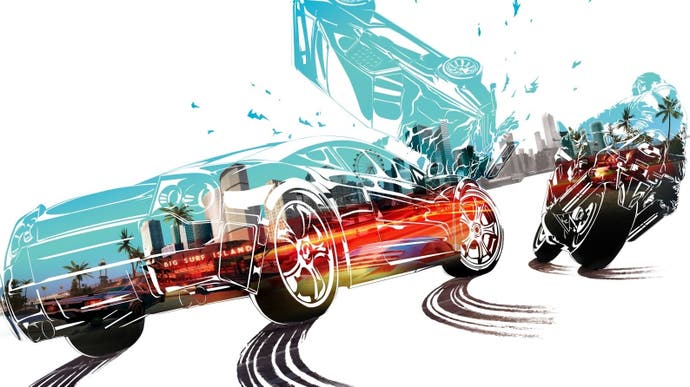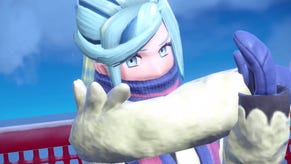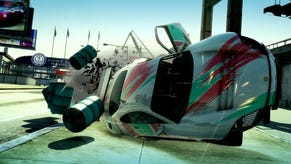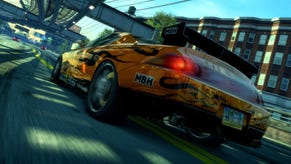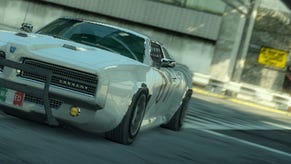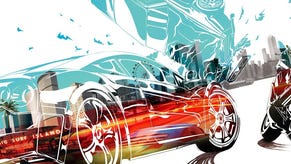Burnout Paradise Remastered on Switch: a classic reborn for handheld play
Hot pursuit.
In the world of Burnout Paradise, running at 60 frames per second means everything. Having smooth, 60Hz feedback is a core tenet of the Burnout series, going right back to the original game on PlayStation 2. Some might say that if it's not 60fps, it's not Burnout. The good news is that the port to Switch sees developer Stellar Entertainment aiming to deliver the same experience - no mean feat considering how CPU-heavy its original open world design is. But just how close to the 60fps target does the remaster get? And what key visual feature set are we getting on Switch: Stellar's own remastered assets as seen on PC, PS4 and Xbox One? Or perhaps the PlayStation 3 and Xbox 360 originals?
First up, it's worth pointing out that in common with the other remasters, this package is content-complete. All eight DLC packs are included within the game's 4GB footprint and there's eight-player online gaming support too - though sadly in my experience, the servers haven't yet been busy enough to stress-test this part of the package. Still, the single-player experience is in focus and you get all online challenges too. The star of the show remains Paradise City itself: from the busy sprawl of Downtown with its billboard ramps and monuments to Big Surf Island's wilder course layouts. As far as making specific use of Switch features, it boils down to solid HD rumble support on the joy-cons, plus the ability to navigate the map with a pinch and pull system while gaming in mobile mode.
In terms of image quality specifics, PS4 and Xbox One ran the remaster at 1080p60, backed up by 2x EQAA - an AMD-specific anti-aliasing technique similar to multi-sampling. Necessarily, the turnout on Switch is a little different. When docked to your TV, Switch delivers a native 1600x900 resolution overall, though it must be said, higher-than-expected levels of pixellation can be seen in parts of the image - artefacts more present in motion. Combined with inferior anti-aliasing, image quality takes a sizeable hit from the PS4 build: any elements with fine sub-pixel detailing like fences or dangling power lines overhead tend to break up visibly at range - which isn't great when blown up on a big TV. Still, at usual racing pace the game looks as great as ever, especially with a touch of motion blur to the screen's edges. Just don't expect a perfectly clean image at all times on a TV - you're far better off with other versions for that.
The good news is that portable play runs at 1280x720 to match the system display. Again though this has a similar issue with artefacting as docked play, in motion, that can create more obvious pixellation on portions of the frame. Still, this was my first impression of the Switch conversion and, while there are still these visible jagged edges, it is a clearer picture thanks to less scaling overall. I do think that mobile play is the biggest revelation: Burnout Paradise has a uniquely pick-up-and go play style that fits the rhythm of portable use. And of course, this is the Switch's stock in trade, its unique selling point.
To get this working on Switch's Tegra X1 chipset involved some major optimisation work. Compression, decompression and general streaming is a challenge for the processor, especially considering its somewhat limited memory bandwidth. Adapting to the GPU and particularly the CPU constraints on Switch was also problematic. It's worth remembering that for their time, Xbox 360 and PS3 were 3.2GHz multi-core CPU juggernauts - meaning that a direct port of the original code to Switch's three available 1.0GHz ARM cores wasn't going to cut the mustard. CPU code was radically optimised for improved performance, with support added to leverage the accelerated Neon instructions for the ARM architecture. Stellar also dug into Nvidia's shader core for GPU optimisations. The end result is smooth streaming with no hitches, limited pop-in and a surprisingly close visual return stacked up against the other current-gen versions.
Inevitably, there are changes to the visual side of things - necessary nips and tucks to accommodate Switch's reduced level of grunt. On the positive side, we get very similar geometry and vehicle draw distances all round - it's practically identical in these regards. Even huge bursts of impact particle effects are close in quality, along with debris during crashes. It's remarkable how much of the world on Switch is in the same league at a functional level, to the other current-gen remasters Stellar Entertainment has delivered. The one noticeable drawback is a reduction in texture quality. With a lesser amount of usable RAM on Switch, something had to give and lower quality assets are one consequence. Thankfully, the drop in quality is well hidden in motion, and crucially, you're still getting an upgrade overall compared to the original textures from Xbox 360 and PlayStation 3.
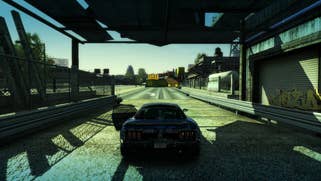
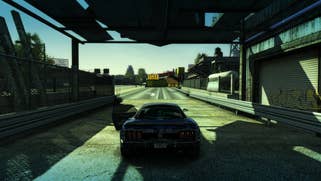


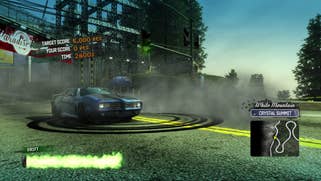

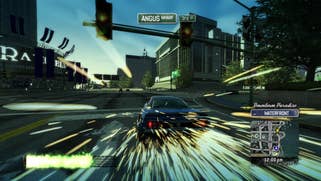
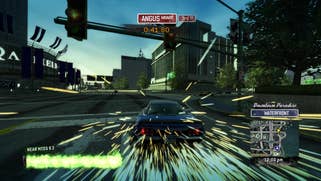
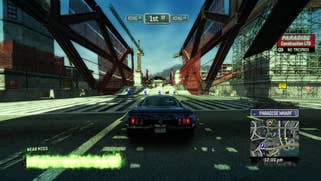

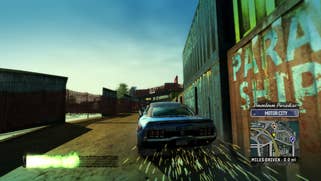
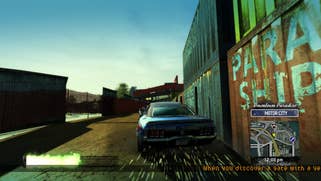
Effects work also sees some changes. Alpha transparencies for smoke are pared back compared to PS4, notably during stunts while drifting corners, or pulling off doughnuts. Shadow quality is also running at a lower quality level: they're softer and less defined overall, but the turnout is still respectable. World shadow draw distance is the same as PS4, but ambient occlusion seems to be less effective or potentially completely absent from the Switch build. It leaves the world looking a lighter, but it's likely a justified trade for more consistent performance.
The good news continues with frame-rate, which plays out for the vast majority of the experience at the target 60 frames per second. Whether you're going for a takedown, or revving up for a race with multiple cars on-screen, it's well tuned for the system in general. Docked play and portable play bear this out in equal measure, but it's fair to say that there are notable exceptions. I've seen drops into the 50-60fps range while travelling the busy downtown roads, particularly when there's significant traffic in play. On the one hand, we know how difficult achieving this performance level is on Switch and the efforts Stellar went to - but at the same time, the reality is that while this version has many improvements over the PS3 original, the older game running on PS3 is essentially locked throughout.
Ultimately, Burnout Paradise Remastered is a success on Switch, but perhaps not the resounding, comprehensive across-the-board win we might have hoped for. Intelligent cuts are made when the port is stacked up against PS4 and Xbox One and we're still getting a better presentation than the last-gen originals, but docked mode image quality falls a little short and the lapses in performance - though infrequent - are felt. However, Switch excels as a handheld and it's here where Stellar Entertainment's work truly pays off. It's a fully featured, content-complete rendition of a truly classic game playing out in the palm of your hand, and the bottom line is that it's still one of the greatest racing games ever made.
